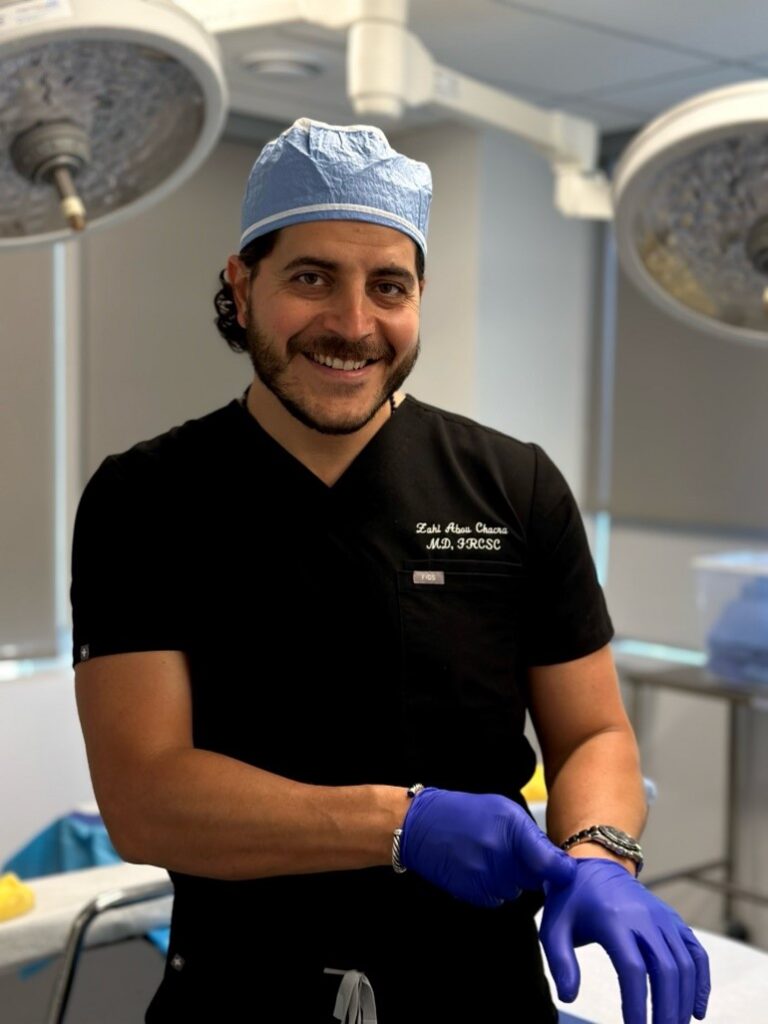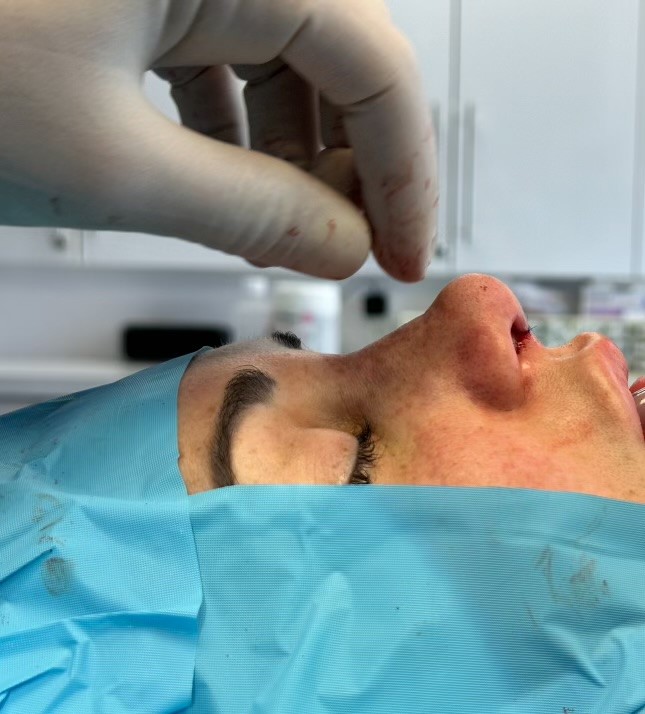
Rhinoplasty is a surgical procedure that reshapes or resizes the nose. While many people associate this procedure with cosmetic enhancement, it also plays a crucial role in improving nasal function. Understanding the differences between rhinoplasty for functional and aesthetic purposes is essential for anyone considering the procedure. Dr. Zahi Abou Chacra discusses more below on these two aspects of rhinoplasty.
Aesthetic Rhinoplasty
Purpose and Benefits
Aesthetic rhinoplasty aims to improve the appearance of the nose and enhance facial harmony. People choose this type of rhinoplasty for various reasons, such as:
- Reshaping the nose: Altering the size or shape of the nose to better fit the patient’s facial proportions.
- Correcting asymmetry: Addressing any nasal asymmetries to achieve a more balanced look.
- Refining the nasal tip: Adjusting the nasal tip to improve its appearance.
- Smoothing nasal humps: Removing or reducing bumps on the bridge of the nose for a sleeker profile.
The Procedure
Aesthetic rhinoplasty involves meticulous surgical techniques to achieve the desired appearance. The surgeon will typically make incisions inside the nostrils (closed rhinoplasty) or across the columella, the tissue between the nostrils (open rhinoplasty). The underlying bone and cartilage are then reshaped to create the new nasal structure.
Recovery and Results
Recovery from aesthetic rhinoplasty can take several weeks, with most swelling and bruising subsiding within a month. Most patients return to their day-to-day activities after cast removal, around the one-week mark. Full results may take up to a year to become fully apparent as the tissues settle into their new shape. The outcome can significantly boost self-confidence and overall satisfaction with one’s appearance.
Functional Rhinoplasty
Purpose and Benefits
Functional rhinoplasty addresses medical issues related to nasal function. The primary goal is to improve breathing and correct structural problems within the nose. Common reasons for functional rhinoplasty include:
- Deviated septum: Correcting a deviated septum to improve airflow and reduce nasal obstruction.
- Nasal valve collapse: Strengthening the nasal valve to prevent collapse during breathing.
- Chronic nasal congestion: Alleviating chronic congestion caused by structural issues.
- Sleep apnea and snoring: Improving airflow to reduce symptoms of sleep apnea and snoring.
The Procedure
Functional rhinoplasty often involves similar surgical techniques as aesthetic rhinoplasty, but the focus is on correcting structural issues rather than cosmetic enhancement. The surgeon may perform septoplasty (correcting the shape of the septum) or turbinate reduction (reducing the size of nasal turbinates) to improve nasal function.
Recovery and Results
Recovery from functional rhinoplasty is like that of aesthetic rhinoplasty, with a focus on restoring nasal function. Patients may experience improved breathing, reduced snoring, and overall better quality of life. Functional rhinoplasty can also provide cosmetic benefits as a secondary outcome when straightening the septum.
Combining Functional and Aesthetic Rhinoplasty
It is not uncommon for patients to seek both functional and aesthetic improvements in a single procedure. Combining these goals can lead to comprehensive results, addressing both appearance and function. For example, a patient with a deviated septum may also want to refine the nasal tip for a softer profile.
In Canada, cosmetic rhinoplasty is a widely accessible procedure, with many skilled surgeons offering both functional and aesthetic options. It is important for patients to choose a board-certified plastic surgeon or an otolaryngologist (ENT specialist) with experience in these procedures to ensure the best possible outcome.

Insurance Coverage
Functional rhinoplasty is often covered by health insurance in Canada, especially if it is performed to correct a medical issue such as a deviated septum. Aesthetic rhinoplasty, on the other hand, is typically considered elective and is not covered by insurance. Patients considering combined functional and aesthetic rhinoplasty should consult with their surgeon and insurance provider to understand the coverage and costs involved.
Consultation and Planning
A thorough consultation with a qualified surgeon is crucial for determining the best approach to surgery. During the consultation, the surgeon will assess the patient’s nasal structure, discuss their goals, and develop a personalized surgical plan. This process ensures that both functional and aesthetic concerns are addressed effectively.
Conclusion
Rhinoplasty is a versatile procedure that can provide significant benefits, whether for cosmetic enhancement or functional improvement. Understanding the differences between aesthetic and functional rhinoplasty, as well as the possibility of combining both, is essential for making informed decisions. In Canada, patients have access to skilled surgeons like Dr. Zahi Abou Chacra, who can help them achieve their desired outcomes, enhancing both their appearance and quality of life.